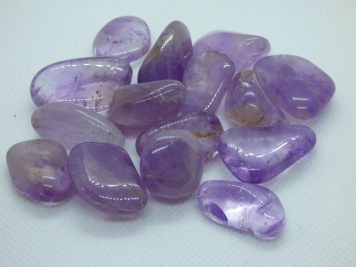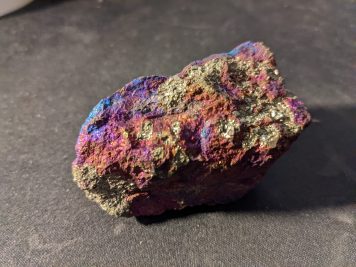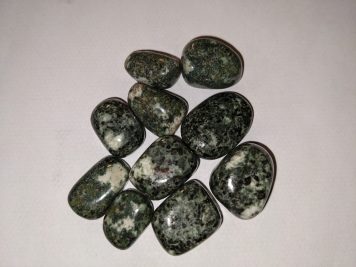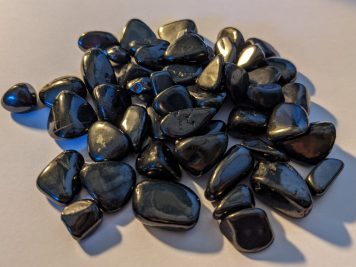
We have previously discussed the Wheel of the Year and have given a brief overview of what each of the dates mean in Wicca. Now, we will pay special attention to four of these points in the wheel. We have chosen points associated with the coming of cold weather: Lughnasadh or Lammas, Mabon, Samhain, and, finally, Yule. Though Yule is the coldest and darkest of the four, it is also where light is actually found in the most auspicious manner.
We will discuss them in detail, looking at relevant energies that acquire significance around the time they take place. However, remember that you can celebrate Yule or Lammas whenever you feel it is Yule or Lammas, or whenever you feel their energies match what you need in your personal life. After all, time is not linear, and you have access to the energy of all sabbats at any time.
Remember that each point in the wheel of the year brings with it invaluable insight. This insight can be turned into a gift that can get you through the most challenging times of your life.
Lughnasadh, also known as Lammas, is a celebration of the last days of summer. It usually takes place on August 1st, but it is celebrated by many the night before, on July 31st. This day is not just about celebrating the fruits of our labor. The idea of mortality appears, as well. The myth surrounding this day is that the God Lugh (according to some Wiccans, one of the faces of the Horned God) sacrificed himself. He did this to save humanity. Lammas has a component of reflecting on the sacrifices others made for our sake.
Something that will resonate with many people in contemporary life is thinking about your ancestors. Most of us have at least one person in our bloodline who was an immigrant. This person left everything they knew and everyone they loved to start all over in a new country. This new country, at least in their time, offered more opportunities for economic growth and a more stable political climate. It is because of them that we are where we are now. Thinking about them around this date is a great day.
On Lammas, we reap what we sow. However, we may start to think about our own mortality as well. The days are starting to get shorter, and so are our lives. There was a component of this in the early farming days when the farmers would look at their accounts. They also froze or otherwise preserved some of the seeds and the doughs for later.
Lughnasadh gives way to Mabon. Mabon takes place on September 21st. Its counterpart is Ostara. Both are days of celebration, as the fruit is plentiful. They are times of abundance. However, during Mabon, the green colors of summer give way to the fire hues of autumn – orange, brown, gold, fiery red. This sabbat receives its name from a Welsh God. However, there are no records of this celebration being celebrated in the times of the Celts.
During this time, we return to the darkness. Wiccans don’t see darkness as something evil. It is a part of the whole, and, as the whole is present in all of us, it is present in all of us. From darkness we come and to darkness we must return. It isn’t winter yet, but we can almost feel it coming. Winter, according to Wicca, is a time of introspection. It is a time for thinking about what may be possible. A time for dreaming and planning, but not for manifestation necessarily.
During Mabon, we reflect on the hopes and expectations we had last Imbolc and how they manifested into our lives. Some may have come exactly as you imagined. Some of your desires may have taken quite an unexpected shape or turn. This is a time to enjoy the fruits of your labor (and the consequences of your mistakes). We are asked to complete what we started.
After Mabon comes Samhain. Now we are in the dark, we may need some guidance to traverse through it. During Samhain, it is believed that the boundaries between the physical world and the Otherworld start to get blurry. We may hold dance or music festivals to commune with spirits from the Otherworld and our ancestors. We ask for guidance when it comes to this time of deep introspection.
In the Western World, a lot of the ancient traditions from the Celtic world are present in Halloween celebrations. The Celts also dressed up in costumes during this date. The Celts called it “mumming.” Once they were dressed up, they would go from door to door singing songs for the dead in each household. They would receive cake as payment. Sounds familiar?
The ancient Celts would also play pranks during Samhain. However, in this ancient time, they blamed their wrongdoing on the Fae (and the Fae would, for sure, be involved in a few naughty tricks of their own).
So far, we have gone from storing away the seed for later, to a time of great abundance, to a time where we seek guidance among the darkness. What comes next? Yule, of course.
Yule takes place on December the 21st. It marks the Winter Solstice. Despite the usual cold weather that comes around this date, it is a day of hope and resurrection. The Sun God is rising. It is no coincidence that Christians celebrate Christmas a few short days after it. Christ would be the Sun starting to appear again.
We have gone through the dark night of the soul, and now there’s a spark of hope. The Sacred Fire of the Celts, however weak, starts to be present again. But first, we must undergo a metaphorical death once again. We must go through the longest night of the year before the days start to get shorter once more.
The symbol of the wheel is particularly important for this sabbat. After all, Yule comes from the Anglo-Saxon word “jõl,” which means “wheel.” Yule is one of the climactic points of the wheel of the year. This is a great date to reflect on the cyclical nature of time. This is counterintuitive to the Western idea that time is linear. However, the more spiritually aligned and intuitive among you probably know that very few things are actually linear. Like the Moon and the seasons of the year, everything is cyclical. Processes finish and restart all the time. Old matters may resurface when we least expect them, if we can benefit from looking at them from a brand new perspective. And, even in the deepest despair, we can see flashes and sparks from the future. This is hope. The spirit of Yule is all about the cyclical.
In short, we have observed how Lammas prepares us for the winter ahead by encouraging us to not only celebrate but think about the darker times ahead. One of the most valuable things you can do around Lughnasadh is think about ways in which you can make your future self’s life easier right now. Then, Mabon is a last celebration of abundance before we enter the darkness of autumn and winter. During the Samhain, the veil between our world and the Otherworld becomes thinner. This is an opportunity to ask for the guidance of our ancestors during this dark time. Finally, in Yule we go through the longest night of the year to see the resurrection of the Sun at the end.
How do you celebrate these dates, if at all? Let us know in the comments!
References:
https://www.goddessandgreenman.co.uk/mabon/
https://www.history.com/topics/holidays/samhain
http://www.thewhitegoddess.co.uk/the_wheel_of_the_year/yule_-_winter_solstice.asp








